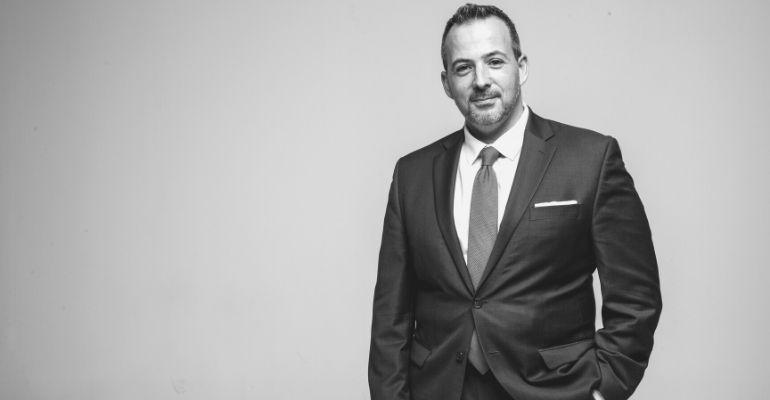What has been the impact of the current pandemic on the field of architecture?
The impact can be divided into two camps for everyone, positive and negative. From a positive perspective it has been a wonderful insight into how resilient we are across almost every industry. We have learned that the entire world has the capacity to shift and pivot to different modes of operation fairly seamlessly.
Overnight we found ourselves in a virtual mode of working, and very quickly we were able to not only maintain operation but also thrive. It has opened up our minds to think long-term about the way we work and how that needs and can change.
Employers have the capacity to consider different ways of working, going forward flexibility will be at the forefront of people’s selection criteria in terms of where and how they work.
Specifically, for architecture and master planning we have seen an interesting trend in that large firms with diverse portfolios are able to quickly shift focus on demand. Smaller firms also seem to be able to be more flexible and adaptable. The greatest struggle that we have seen over the last few months has been with medium size firms, as they have neither the expansive portfolio diversity nor the adaptability of a small firm.
What do you see being the long-term impact on the industry?
The one thing that is most certainly here to stay is the different ways of working. Pre Covid-19 we were already seeing large corporations embracing co-working spaces and buying subscriptions to co-working networks. The current pandemic has accelerated this, we will start to see a rise of people and businesses looking for more choice, flexibility and accessibility.
Interestingly, many organisations saw an increase in productivity while working remotely. Now with people retuning to the office and businesses opening back up, anecdotally it seems they are seeing that productivity reduce.
It is short sighted to design long-term in response to the pandemic. What we draw today could take 20 years to be completed.
However, there will certainly be changes that are permanent. The focus on health and wellness in terms of environment and behaviours. We will see people taking charge of their health and wellness, opting for open spaces, healthier choices and seeking centralised healthcare access. What lockdown has shown is the value of private open space. Generous balconies, podium landscape and parks outside the home.
We foresee a move towards wanting things closer, and more accessible such as smaller hospitals and clinics embedded in communities.
What innovative architectural solutions and approaches have you seen in response to the pandemic?
Architects that see the pandemic as an opportunity are fundamentally shifting their priorities both from a project and a design perspective. They are the ones that are responding quickly and making changes very fast.
Remarkably however the changes that are being made and accelerated into action are changes that the architectural world have been pushing for a long period of time.
There is an industry wide shift towards building healthier cities and with that it is becoming a lot easier to convince clients of the vital importance of sustainability and resilience in master planning. More importantly clients are now understanding that healthy, sustainable and resilient cities are part of the same solution towards thriving cities.
This period of uncertainty will reward the brave. Those that are bold enough to push the boundaries of design with health at the epicentre of creativity.
How will physical space and the demand for physical space change?
We are already seeing an increased emphasis on public open spaces and generosity of space. This might not necessarily last and I imagine people may come back to high-density living. However certainly short to medium we will see a continued demand of people craving their own open spaces, gardens and land.
When it comes to indoor environments, there will be a long-term impact on the way offices are designed, used and created. I imagine people will come together occasionally, as opposed to daily mandated office work.
There will also be changes in retail and entertainment, we can expect greater convergence between virtual and real-life shopping and enjoyment, an integration of browsing online and purchase in person.
From the outbreak of this pandemic, what do you think the biggest takeaway has been for this generation of architects?
Most young architects have never seen a recession. Let alone a recession combined with a global health pandemic. It will be interesting to see the long-term impact on their approach to architecture. On the one hand, it may make them more reflective and cautious, however it may also see a rise in an entrepreneurial mindset. This could pave the way for a different type of architectural business, with social enterprise and public wellbeing at the centre.
The role of academia could fundamentally change in terms of design education away from the standard university format and more towards focussed and partially online academies. The Architecture Association School of Architecture started in 1850’s by a group that were disenchanted by conventional university design education. so, they saw an opportunity to start a private academy which is now one of the top five schools for architecture. This model may become increasingly popular and would help people avoid getting into enormous amount of debt in order to become architects.
In addition, we may see a rise in hybrid practices that meaningfully combine design and social enterprise or design and city resilience.
Overall, we could see a divide between those who are scared and those who see the hopefulness of the situation and use it to drive meaningful change.





